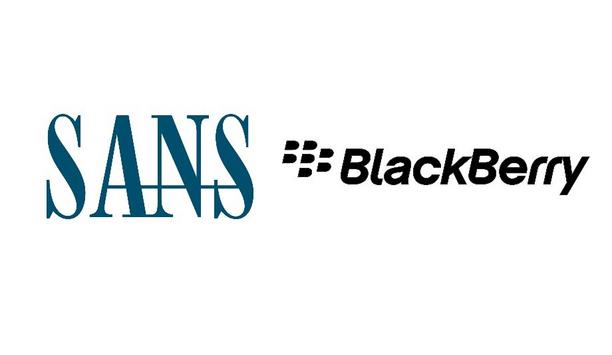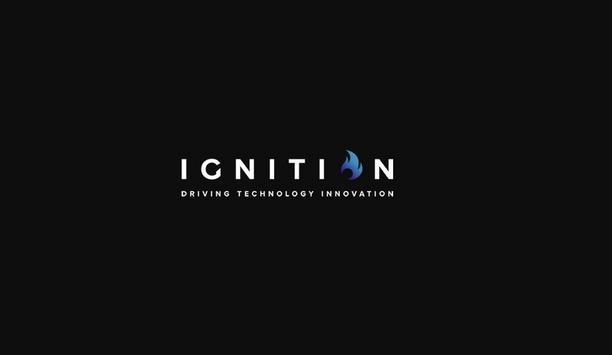BlackBerry Limited - Experts & Thought Leaders
Latest BlackBerry Limited news & announcements
Comments by John Davis, Director UK & Ireland, SANS Institute, EMEA: "JD Sports’ data breach reminds us that no organisation is safe, and everyone has a role to play in digital fortification. Following a huge number of high-profile security breaches just in the past year, we’ve learnt that budget alone is not enough to implement adequate defences.” "Cybercriminals are levelling up. Their attacks are more prevalent, more sophisticated and harder to detect. Brand reputations and relationships with customers are on the line. Customers will reward businesses who can persuade them they are best equipped to manage their data.” National reporting centre "The golden rule to remember is that prevention is always better than cure. Power comes through knowledge about how cyberattacks could happen and flagging them to the UK's national reporting centre for fraud and cybercrime. This is why cybersecurity training shouldn’t just be a tick box exercise, but an ongoing journey of education for us all." Data related to 10 million customers might now be at risk after the company was hit by a cyber-attack" Keiron Holyome, VP UKI & Emerging Markets, BlackBerry: “This attack on JD Sports underscores that the global cyber risk equally applies to British institutions and their supply chains. Data related to 10 million customers might now be at risk after the company was hit by a cyber-attack.” Prevention-first security posture “Businesses should not have to suffer the effects of cyber-attacks. Endpoint detection and response (EDR) focused solutions take action too late and do not prevent breaches. Prevention is the best strategy. With a prevention-first and AI-driven approach, malware can be stopped in its tracks.” “A prevention-first security posture begins with neutralising malware prior to the exploitation stage of the kill-chain. By stopping malware at the exploitation stage, organisations can increase their resilience, reduce infrastructure complexity, and streamline security management. We do not believe that there needs to be victims.”
Keiron Holyome, Vice President (VP) of UKI, Middle East and Africa at BlackBerry said, "The education sector continues to be an attractive target for cybercrime." He adds, "As we have seen again by the latest attack from Vice Society on both US and UK schools, criminals are increasingly attracted by stores of sensitive student data, as well as financial information, parent and investor details, and, too often, a lack of attention to and investment in cybersecurity." Cybersecurity investments Keiron Holyome continues, "To ensure the continuity of education, especially in the context of remote learning, we encourage the government to invest in cybersecurity for the education sector, considering the impact on individuals’ well-being and ensuring security, productivity, and user experience." He further said, "If these devices become infected with a virus or malware, they can expose sensitive personal information that students share during the learning process. This attack should be an alarm bell for the public sector, a demonstration of the need to secure every endpoint. Even the smallest chink in the nation's digital armour could spell disaster."
Ignition Technology announces the launch of Catalyst Insights, the UK’s first ‘Cyber-Security-as-a-Service’ aggregation platform designed exclusively for the channel. Catalyst Insights currently supports 15 vendors spanning endpoint assessment, breach data reporting, MFA, EDR, IT Service Desk and Contact Centre, delivered within an integrated management and reporting service. Developed over the last 12 months, Catalyst Insights provides a single pane of glass deployment, management and reporting function offered as a white label platform to Ignition’s 870 strong partner community to streamline MSSP and SoC delivery for the channel. Creating highly configurable solutions At launch, Catalyst Insights integrates with 15 security and infrastructure management products with built-in breach data reporting and Microsoft Active Directory support to allow channel partners to create highly configurable solutions for both single clients and as part of a MSSP / SoC offering. “Several security vendors offer ‘Cyber-Security-as-a-Service’ solutions, but these are only designed for their own products and each requires a separate administrative layer which is impractical for channel partners’ supporting growing client bases,” explains Paul Risk, CTO for Ignition, “In some cases, these products were never designed for MSSP usage and as such offer limited multi-tenant support, service provider reporting or integration with IT service desk tools.” Cyber security solutions Catalyst Insights has been developed over the last year based on feedback from our partners" “Catalyst Insights has been developed over the last year based on feedback from our partners to offer a better way of using multiple best-of-breed cyber security solutions within an integrated process to handle moves, adds and changes as well as monthly billing and reporting,” adds Risk. Catalyst Insights launches with built-in breach data reporting to allow channel partners to show clients which corporate email addresses, passwords and personal data is on the dark web, and where these have been connected to known breaches. Other noteworthy features include Global Cloud Health Status showing all the data centres and component status’ of AWS, GCP and Azure/O365 in a simple view plus Active Directory to Endpoint AV cross-referencing to show which endpoints don’t have AV installed, or what machines have AV that aren’t in Active Directory. Offering significant benefits The platform includes integration capabilities that spans both the Ignition vendor portfolio and third party solutions including: Blackberry Cylance: An endpoint assessment scanner. Cybereason: Endpoint Protection, Detection, and Response. C3M: Cloud security posture management and compliance assurance. Okta: Multi Factor Authentication and Single Sign On. SolarWinds: IT Service Desk platform. Duo Security: Multi Factor Authentication and Single Sign On. Five9: Cloud Contact Centre software. IT Glue: A SOC 2-compliant documentation management platform. LogicMonitor: A fully automated, cloud-based infrastructure monitoring platform. Microsoft Active Directory support for management and reporting. Fortinet: Next-Generation Firewall and Secure SD-WAN. Microsoft Office365 productivity suite. Qualys: Auditing, compliance and cyber protection. MalwareBytes: Anti-malware software. Gerhard Conradie, CEO of ENHALO Limited, an advanced cyber defence group says, “This concept of aggregating security SaaS is long overdue and offers significant benefits in terms of streamlining the management of multiple solutions under a common platform.” “Individual security vendors have a vested interest in making it harder for channel partners to swap out their solutions or mix and match different point products. It is logical and highly beneficial that a distributor like Ignition should take on this role which will make not only selling cyber security SaaS easier, but also reduce the day-to-day management and reporting burden,” Conradie adds. SaaS based application Carl Shallow, Pre-Sales Director at Orange Cyberdefense, the expert cybersecurity business unit of the Orange Group says, “We talk to customers of all sizes and industries and the common requirement they have is a dashboard or management tool that gives the visibility of their deployed security estate.” “To be able to converge this into a SaaS based application that gives additional benefits will always help improve the relationship between the customer, reseller and distribution company. We can only see this type of requirement growing along with the automation that becomes possible running it as SaaS solution.” Cost effective cloud-based software We have a common goal in that every day we help Software Vendors find their ideal customers" “Having witnessed the recent security attacks on Covid-19 vaccine research companies, everyone understands how critical it is that businesses make the right cybersecurity software choices”, comments Julian Painter, CEO at Yappady Apps. “We have a common goal in that every day we help Software Vendors find their ideal customers. As one of the UK’s most popular advisors to SME on choosing the most cost effective cloud-based software, at Yappady.com we are proud to be a founder partner with Ignition and highly commend their Catalyst Cybersecurity-as-a-Service initiative to our clients.” “At a technical level, Catalyst Insights uses direct calls to the underlying API’s of each vendor solution and this framework approach makes it easier to add additional products, bespoke platforms and scripts as we onboard more vendors or if channel partners express a need,” says Risk. Managed security services market Ignition is currently developing additional Catalyst Insights ‘connectors’ to add integration support for Chronicle, BeyondTrust and IRONSCALES. Partner feedback has been positive with a recent Ignition channel survey highlighting beneficial Catalyst Insights use cases including ‘Upselling product/services to existing customers’ (26%), ‘As a business development tool’ (25%), and ‘As an end customer resource’ (23%). According to MarketsandMarkets, the global Managed Security Services Market is projected to grow from USD 31.6 billion in 2020 to USD 46.4 billion by 2025, at a Compound Annual Growth Rate (CAGR) of 8.0% during the forecast period.
Insights & Opinions from thought leaders at BlackBerry Limited
What would you do if, tomorrow morning, you opened your work laptop to see a ransomware demand? “Oops: Want Your Files Back? Here’s How to Pay”. It’s a pretty terrifying prospect. In that moment, IT and senior management are rushing to restore previous versions via advanced cybersecurity – or if they can’t, they’re considering paying up. As for the rest of your company’s employees, their online training modules in how to prevent a cyber-attack or create a secure password won’t help them here. With all systems down, clients still need servicing. Business continuity can’t take another hit after COVID. And who will safeguard their jobs if the company loses money? Employees are in the dark, meaning chaos isn’t far away. Emergency Mass Notification System (EMNS) 37 percent of respondents indicate implementation of an EMNS solution set up in their organisations This sounds like every manager’s worst nightmare, though surprisingly little is done to prevent confusion and disruption should an unexpected incident occur. According to the 2019 Gartner Security and Risk Management Survey, only 37 percent of respondents indicate that they have a full implementation of an Emergency Mass Notification System (EMNS) solution set up in their organisations. However, with the variety of challenges all organisations faced in 2020, devastating fires, civil unrest and of course, the pandemic, crisis managers have begun to invest in solutions beyond EMNS that help them plan, detect, respond and recover more quickly to any critical event a modern enterprise may face. Many are beginning to consider how the right technology could help mitigate any further disruption when we all return to the office but – as the ransomware, example proves – this sort of speedy, secure crisis communication isn’t just for the post-COVID season. Disruption can happen at any time, to any organisation, working in any location. Critical Event Management (CEM) Organisations must choose a Critical Event Management (CEM) solution which perfectly suits the needs of their business. Crisis managers will want to consider the following four questions. Four vital questions to pinpoint the right CEM What Keeps You Awake? As a business owner, what can potentially disrupt your business operations or create a dent in your firm’s reputation? While we can develop response and recovery measures to address the threat of natural disasters or other potential man-made threats (example, active shooter incidents, building fire emergencies, etc.), there may be other potential risks we may not have planned for. In this instance, the first probable response is to reach out to your most important stakeholders, provide assurance or instructions, and seek acknowledgment from your stakeholders as part of your communications strategy. Being able to account for your team members will then allow you to better size up your next best response to a critical event, collectively. Who Regulates You? Businesses operating in specific sectors may be subjected to regulatory requirements. For example, organisations operating critical information infrastructures (CIIs) may be expected to report cybersecurity incidents within a specified timeframe to “sector regulators”, with relevant details that should include the extent or progress of containment and resolution. The expectation is not only confined to the speed of escalation and reporting to the regulator(s), but there is pressure within the organisation’s IT or cybersecurity team(s) to provide a complete situational picture of the incident while facilitating swift resolution. Given the nature of such a threat, business leaders will be taking an unnecessary risk by relying solely on email and SMS communications. Instead, a secured platform that can support the entire incident response lifecycle via a common operating picture through automated alerting and collaboration with relevant stakeholders would be a better option. Who Are You Responsible For? When a critical event has the potential to result in the loss of lives (or any near equivalent), companies have an expected duty of care to their staff and other concerned stakeholders. This should not be confused with accounting for only those operating in the physical premises, but anyone who is contracted by the company needs to be accounted for (yes, remote workers and outsourced service vendors should be included). Businesses still relying on the manual call tree system will experience the excruciating pain of reaching out to staff one by one or must wait for the “next identified tier leader” to reply. Instead, communications platform that can quickly push out alerts, record acknowledgments and facilitates critical information sharing with first responders can significantly reduce response and recovery time. Does Anyone Need to Know? When a critical event occurs (or is about to occur), do the senior management team or Board members need to receive first-hand information? How about other staff and essential vendors within the company? Relying on emails and SMS alone can be problematic, particularly when critical events occur in the middle of the night or on a holiday weekend. If critical events require authorisation for certain responses to proceed, surely it should not wait till the next morning. To mitigate this risk, a reliable and robust CEM platform with the ability to provide deliver assurance and secure two-way communication should be considered to ensure prompt dissemination and response. What’s non-negotiable in a CEM platform? Should be able to manage last minute ‘live’ critical plan changes on an accessible and secured platform Whichever CEM solution crisis managers choose, it should be able to manage last minute ‘live’ critical plan changes on an accessible and secured platform. A disruptive event is always in flux, and as such, any technology must be able to quickly communicate the latest plans from leadership teams. The platform should also enable swift notification in the event of activation; provide a means of accountability tracking; facilitates critical information gathering and management from operational and tactical response teams; and, most importantly, enable collaboration between all those who have a stake in keeping the business operating smoothly. Security standards These tactics are nothing without a secure platform. If it can be hacked, the reliability of all information transferred through its network is cast into doubt. Each platform should have industry-recognised security standards and demonstrate resilience to hack attempts. Many now have a managed services team behind them, able to provide trusted assistance whenever an emergency happens. Chaos arises not from the source of business disruption, but from the panicked reactions of teams. With CEM platforms, calm can be restored among all stakeholders while a solution is found, dramatically reducing the impact of the event on the day-to-day operations of the business.
A modern guide to data loss prevention
Download7 proven solutions for law enforcement key control and asset management
DownloadThe truth behind 9 mobile access myths
DownloadAccess control system planning phase 2
DownloadSecurity practices for hotels
Download











